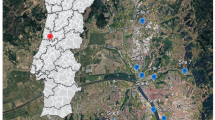Abstract
The effects of glyphosate herbicide-induced changes in wetland emergent vegetation (largely cattails,Typha spp.) on densities of ducks (Anatinae) were assessed in northeastern North Dakota. In 1990 and 1991, 17 cattail-dominated wetlands were randomly assigned to 0% (reference wetlands), 50%, 70%, or 90% areal spray coverages with glyphosate herbicide. Densities of green-winged teal (Anas crecca), bluewinged teal (Anas discors), gadwalls (Anas strepera), and ruddy ducks (Oxyura jamaicensis) were similar among treatments during both post-treatment years (P≥0.1). One year post-treatment, mallard (Anas platyrhynchos) and northern pintail (Anas acuta) abundances did not differ among treatments (P≥0.1), whereas two years post-treatment their abundances were greater in the sprayed wetlands than in the reference wetlands (P≤0.1). Densities of northern shovelers (Anas clypeata) and redheads (Aythya americana) differed among treatments in both post-treatment years, with the 50% sprayed wetlands harboring more ducks than did the other three treatments. Percent coverage and hectares of open water were positively correlated with numbers of diving ducks (Aythyini and Oxyurini) (P≤0.1). Dabbling duck (Anatini and Cairinini) numbers correlated positively with hectares of open water and dead vegetation, whereas their numbers were negatively correlated with percent coverage of live vegetation (P≤0.1). Results of this study suggest that numbers of ducks were positively influenced by creating a mosaic of open water, live vegetation, and dead vegetation with glyphosate herbicide.
Similar content being viewed by others
Literature Cited
Arnold, T. W., M. D. Sorenson, and J. J. Rotella. 1993. Relative success of over water and upland mallard nests in southwestern Manitoba. Journal of Wildlife Management 57:578–581.
Blixt, D.C. 1993. Effects of glyphosate-induced habitat alterations on birds using wetlands. M.S. Thesis. North Dakota State University, Fargo, ND. USA.
Brown, M. and J. J. Dinsmore. 1986. Implications of marsh size and isolation for marsh bird management. Journal of Wildlife Management 50:392–397
Cody, R. P. and J. K. Smith 1991. Applied Statistics and the SAS Programming Language. Third ed. Prentice Hall, Englewood Cliffs, NJ, USA.
Conover, W. J. 1980. Practical Nonparametric Statistics (second edition). John Wiley & Sons, New York, NY, USA.
Fritzell, E. K. 1989. Mammals in prairie wetlands. p. 268–301.In A. van der Valk (ed.) Northern Prairie Wetlands. Iowa State University Press, Ames, IA, USA.
Greenwood, R. J., A. B. Sargeant, D. H. Johnson, L. M. Cowardin, and T. L. Shaffer. 1995. Factors associated with duck nest success in the prairie pothole region of Canada. Wildlife Monograph No. 128.
Huffman, L. E. 1992. Magnitude and potential solutions of blackbird-sunflower problem. p. 7–8.In G. M. Linz (ed.) Proceedings of a Cattail Management Symposium. U.S. Department of Agriculture, Denver Wildlife Research Center and U.S. Fish and Wildlife Service, Fargo, ND, USA.
Hutto, R. L., S. M. Pletschet, and P. Hendricks. 1986. A fixed-radius point count method for nonbreeding and breeding season use. Auk 103:593–602
Johnson, D. H., A. B. Sargeant, and R. J. Greenwood. 1989. Importance of individual species of predators on nesting success of ducks in the Canadian Prairie Pothole Region. Canadian. Journal of Zoology 67:291–297.
Kaminski, R. M. and H. H. Prince. 1981. Dabbling duck and aquatic macroinvertebrate responses to manipulated wetland habitat. Journal of Wildlife Management 45:1–15.
Kantrud, H. A. 1986. Effects of vegetation manipulation on breeding waterfowl in prairie wetlands—a literature review, U.S. Fish and Wildlife Service Technical Report, No. 3.
Krapu, G. L., L. G. Talent, and T. J. Dwyer. 1979. Marsh nesting by mallards. Wildlife Society Bulletin 7:104–110.
Linz, G. M., D. L. Bergman, D. C. Blixt, and W. J. Bleier. 1994. Response of Black Terns (Chiidonias niger) to glyphosate-induced habitat alterations on wetlands. Colonial Waterbirds 17:160–167.
Linz, G. M., D. L. Bergman, H. J. Homan, and W. J. Bleier. 1995. Effects of herbicide-induced habitat alterations on blackbird damage to sunflower. Crop Protection 14: (in press).
Merendino, M. T. and L. M. Smith. 1991. Influence of drawdown date and reflood depth on wetland vegetation establishment. Wildlife Society Bulletin 19:143–150.
Murkin, H. R., R. M. Kaminski, and R. D. titman 1982. Responses by dabbling ducks and aquatic invertebrates to an experimentally manipulated cattail marsh. Canadian Journal of Zoology 60:2324–2332.
North Dakota Agricultural Statistics Service. 1994. North Dakota agricultural statistics 1993. North Dakota State Univ., Fargo. Agricultural Statistics No. 63. 112 pp.
Solberg, K. L. and K. F. Higgins. 1993. Effects of glyphosate herbicide on cattails, invertebrates, and waterfowl in South Dakota wetlands. Wildlife Society Bulletin 21:299–307.
Stewart, R. E. and H. A. Kantrud. 1973. Ecological distribution of breeding waterfowl populations in North Dakota. Journal of Wildlife Management 37:39–50.
Stoudt, J. H. 1971. Ecological factors affecting waterfowl production in the Saskatchewan parklands. U.S. Fish and Wildlife Service, Washington, DC, USA. Resource Publication 99.
Stromstad, R. 1992. Cattail management: the North Dakota Game and Fish Department perspective. p. 38–41.In G. M. Linz (ed.) Proceedings of a Cattail Management Symposium. U.S. Department of Agriculture, Denver Wildlife Research Center and U.S. Fish and Wildlife Service, Fargo, ND, USA.
Tacha, T. C., W. D. Warde, and K. P. Burnham. 1982. Use and interpretation of statistics in wildlife journals. Wildlife Society Bulletin 10:355–362.
Weller, M. W. 1978 Management of freshwater marshes for wildlife. p. 267–284.In R. E. Good, D. F. Whigham, and R. L. Simpson (eds.) Freshwater Wetlands: Ecological Processes and Management Potential. Academic Press, New York, NY, USA.
Weller, M. W. and L. H. Fredrickson. 1974. Avian ecology of a managed glacial marsh. Living Bird 12:269–291.
Author information
Authors and Affiliations
Rights and permissions
About this article
Cite this article
Linz, G.M., Blixt, D.C., Bergman, D.L. et al. Response of ducks to glyphosate-induced habitat alterations in wetlands. Wetlands 16, 38–44 (1996). https://doi.org/10.1007/BF03160644
Received:
Revised:
Accepted:
Issue Date:
DOI: https://doi.org/10.1007/BF03160644




